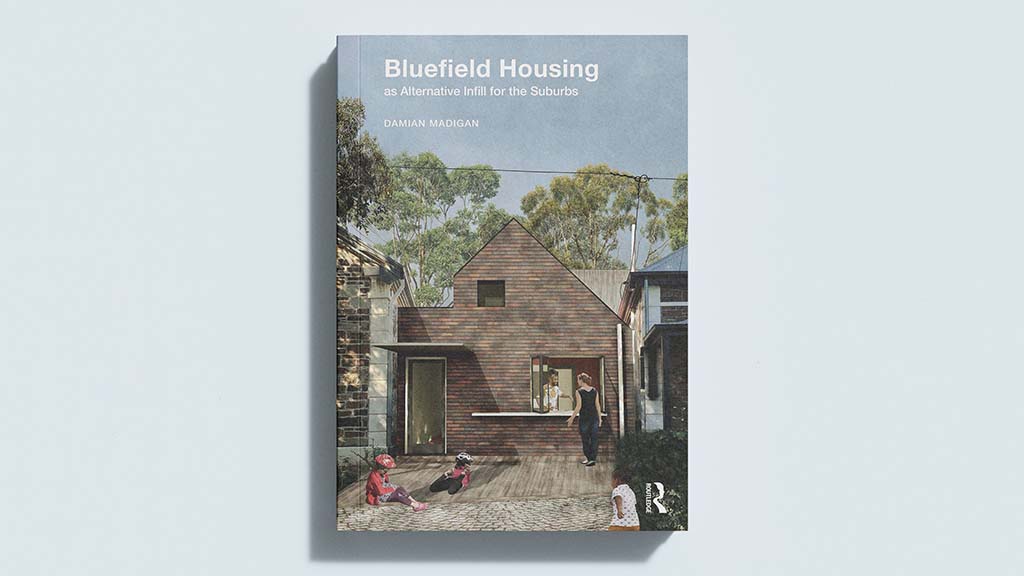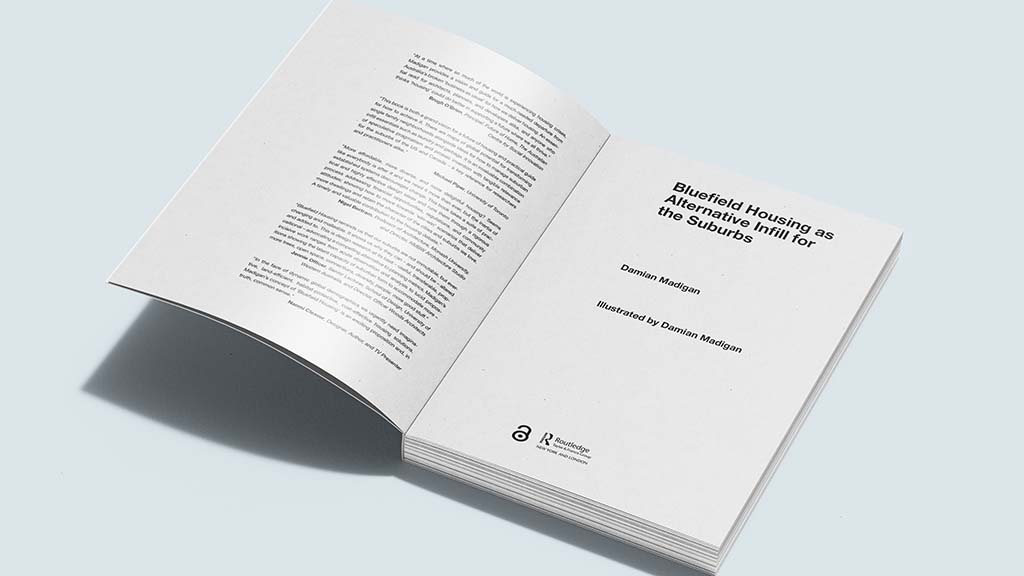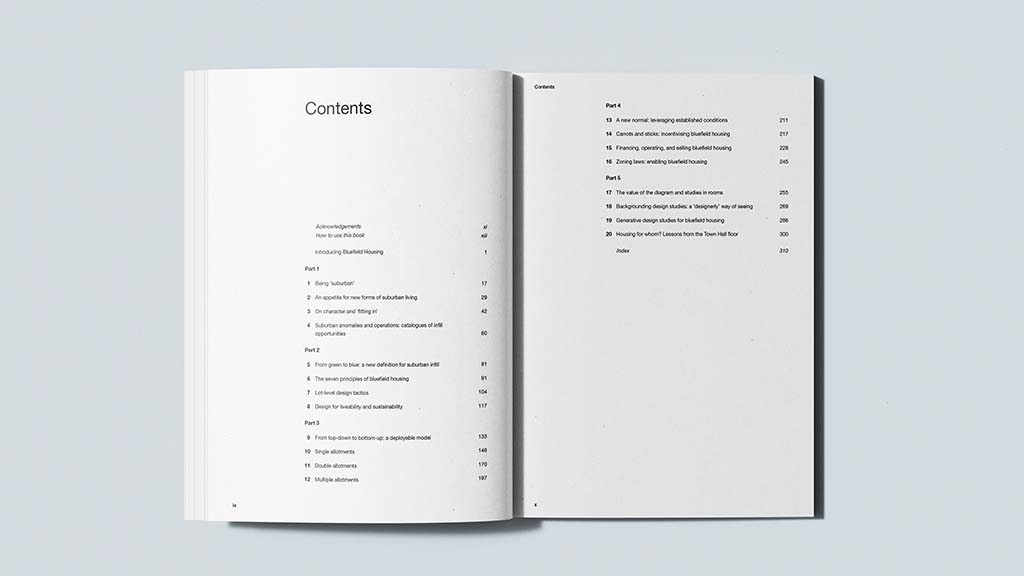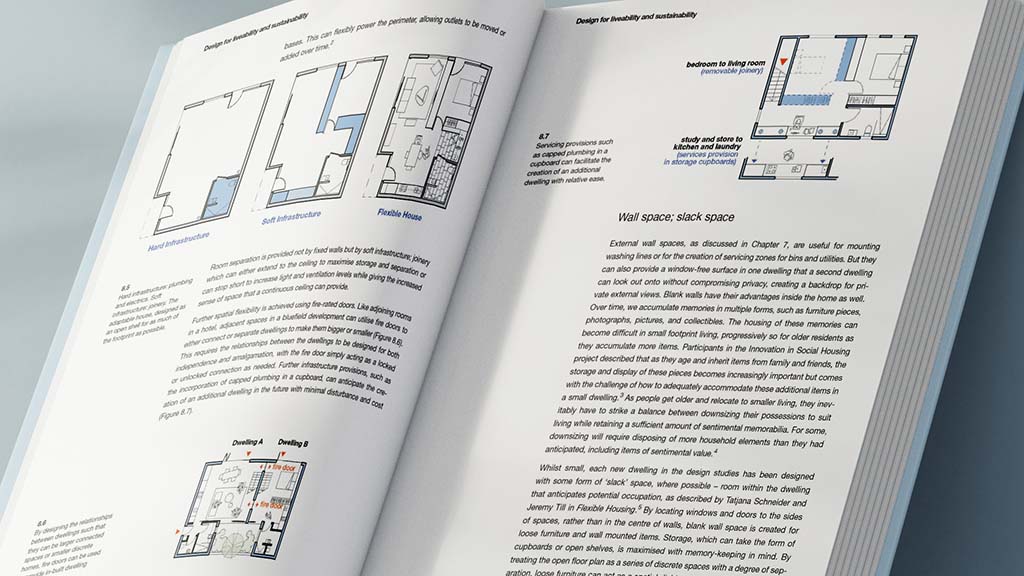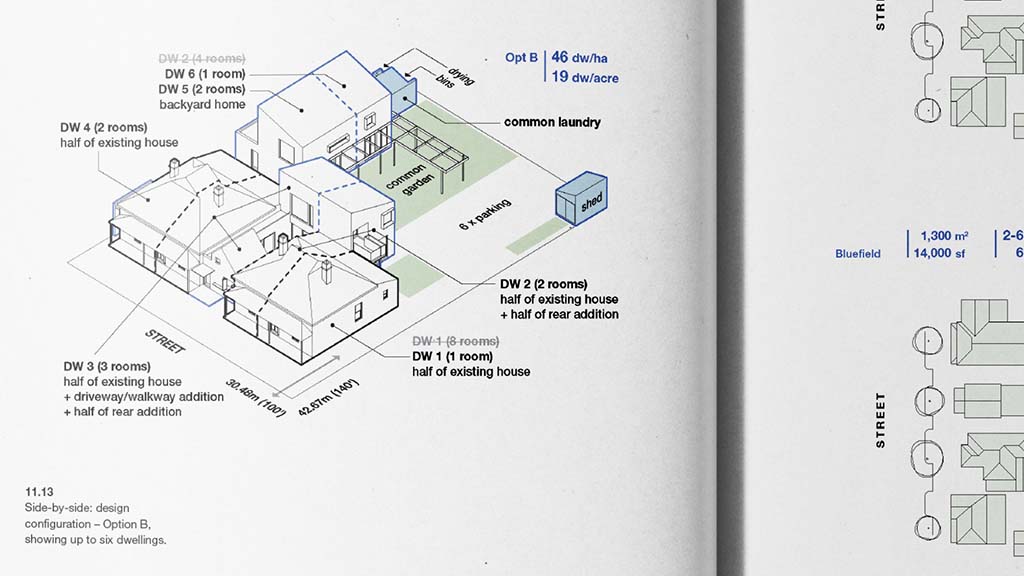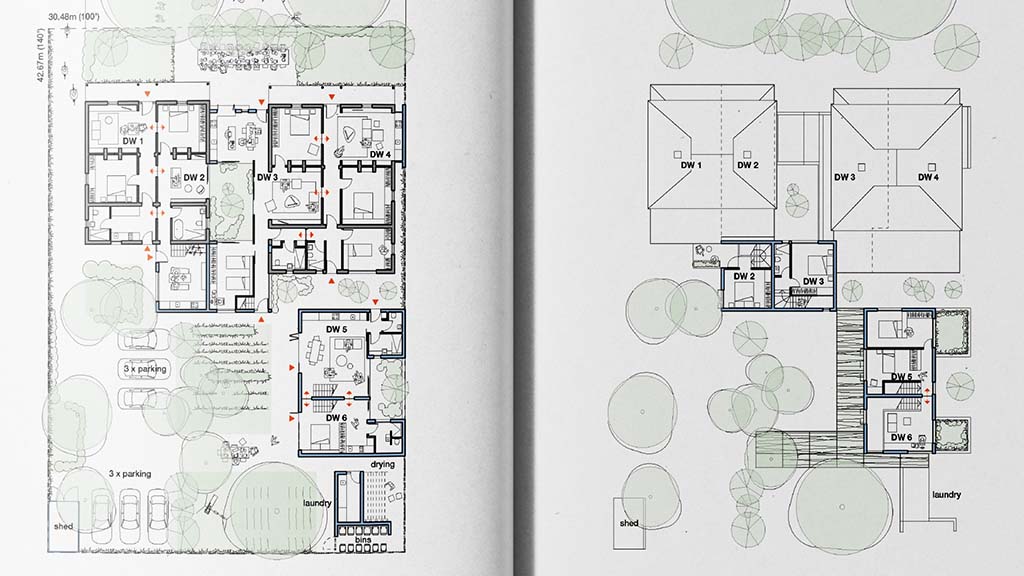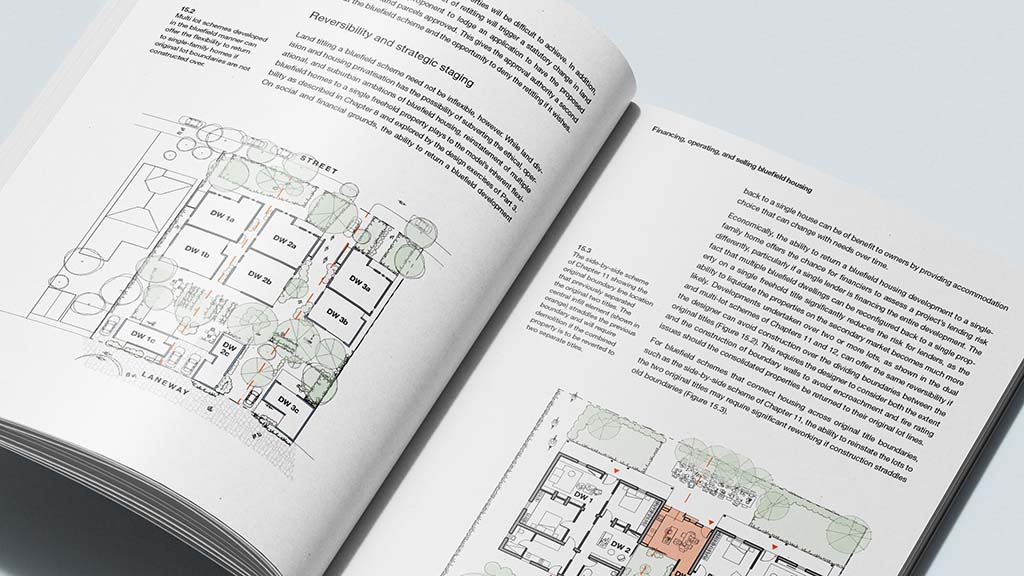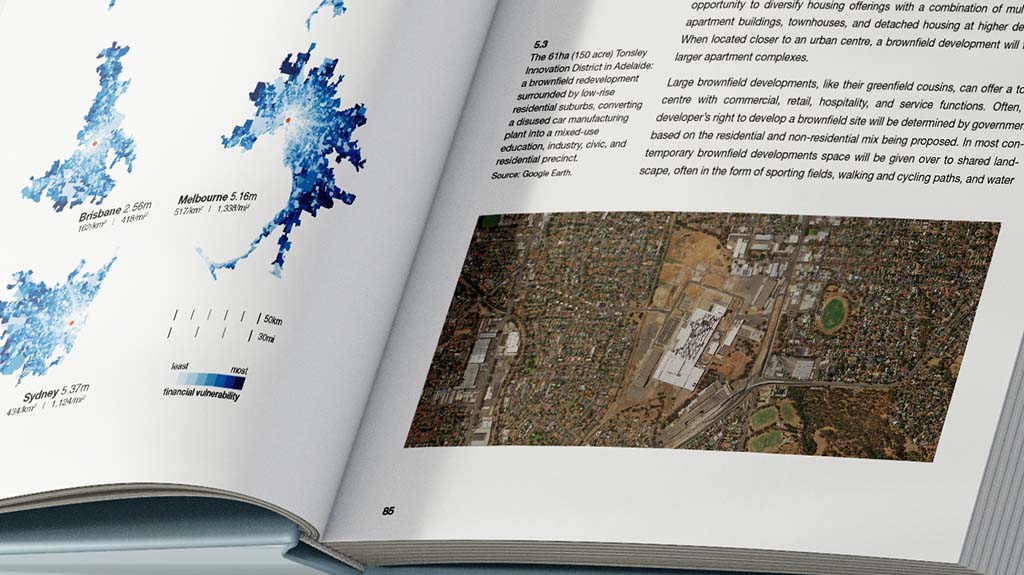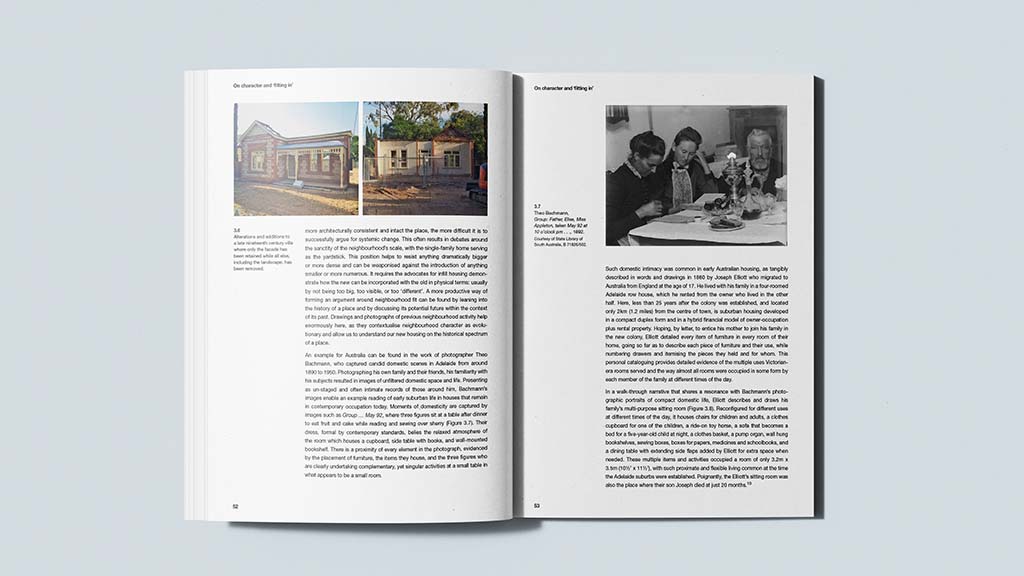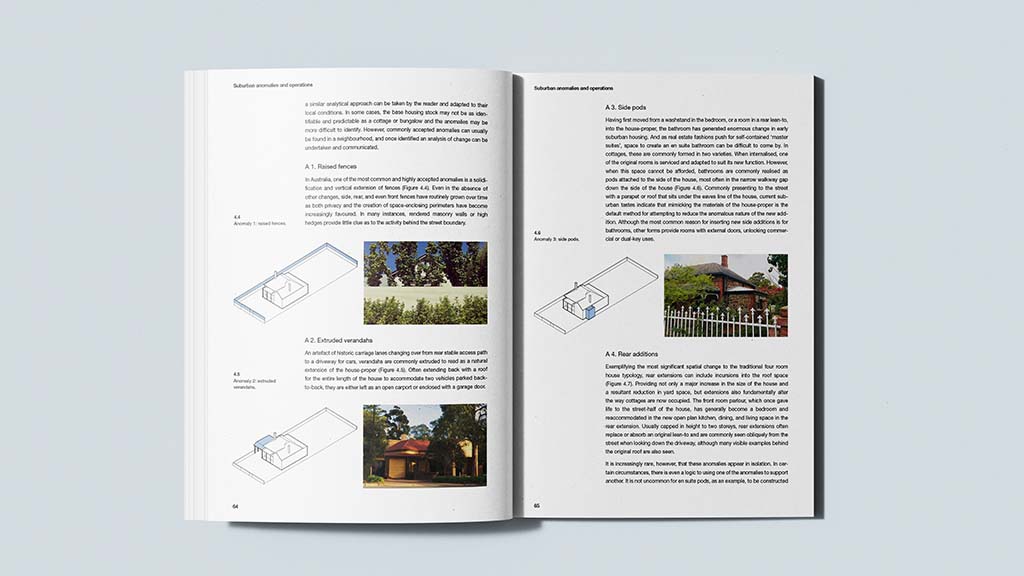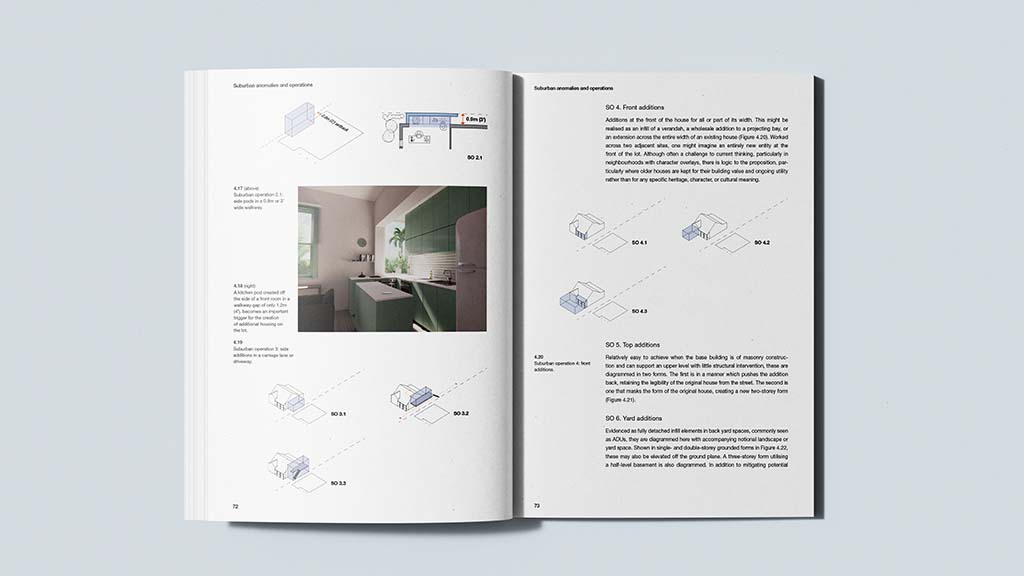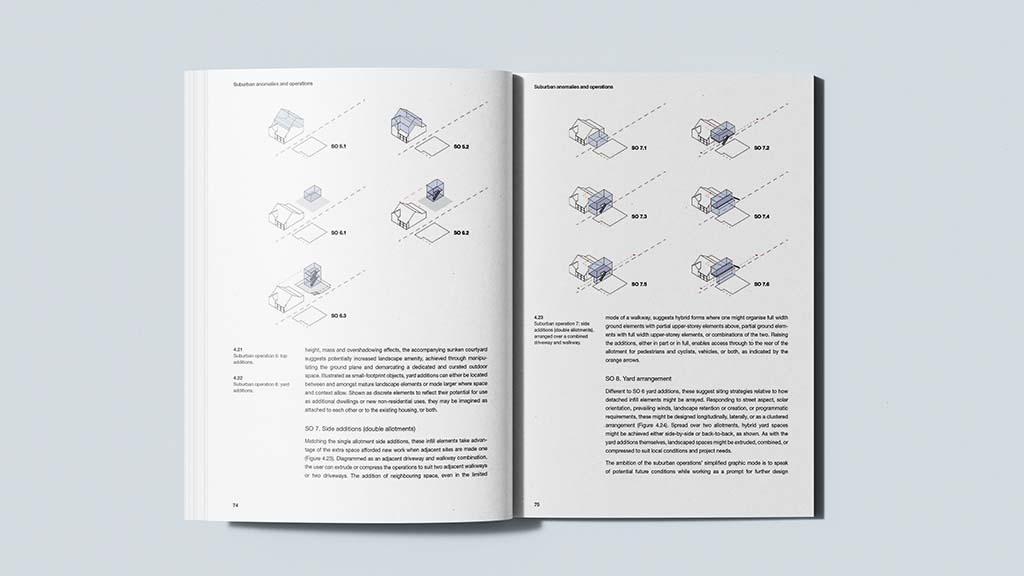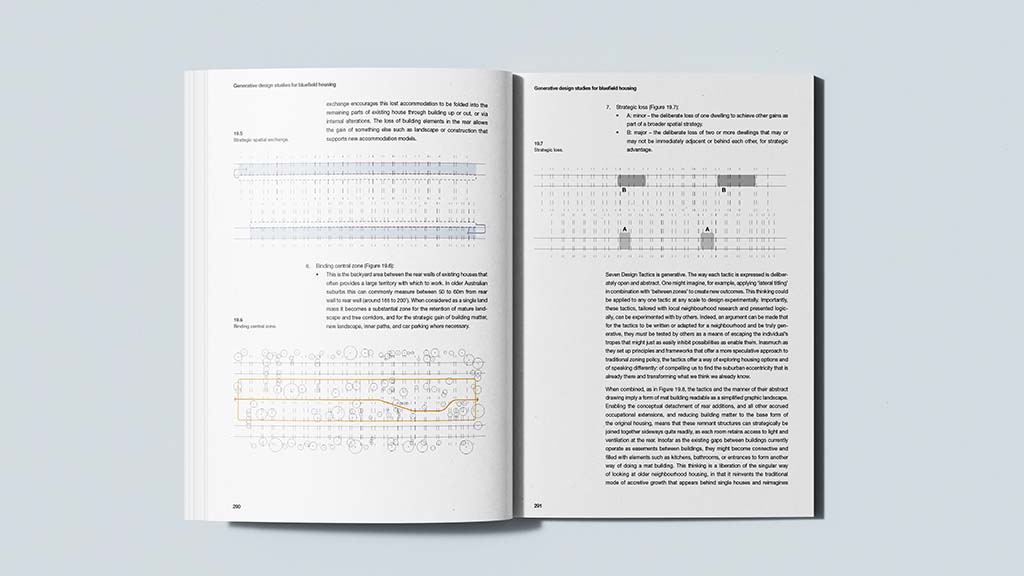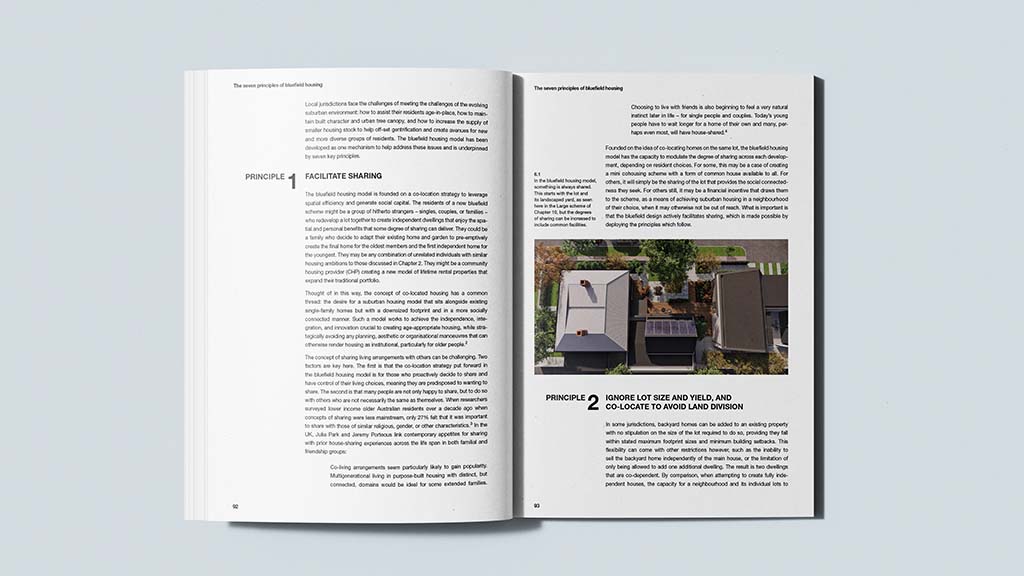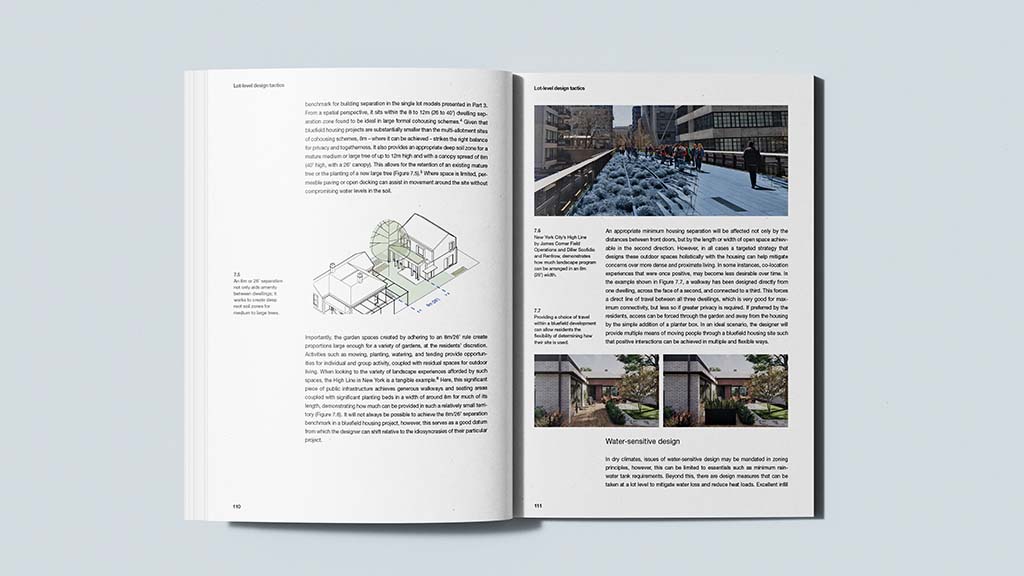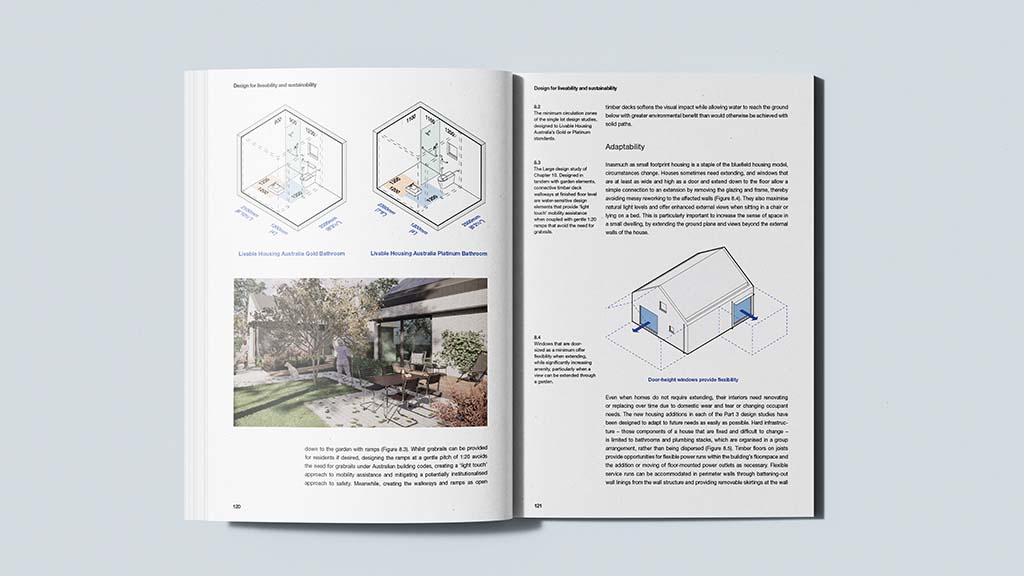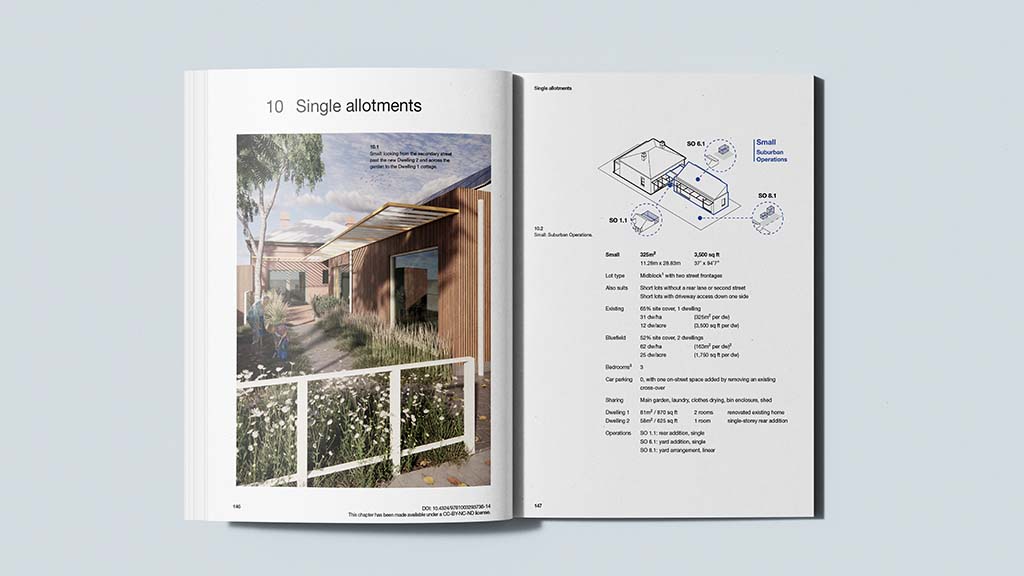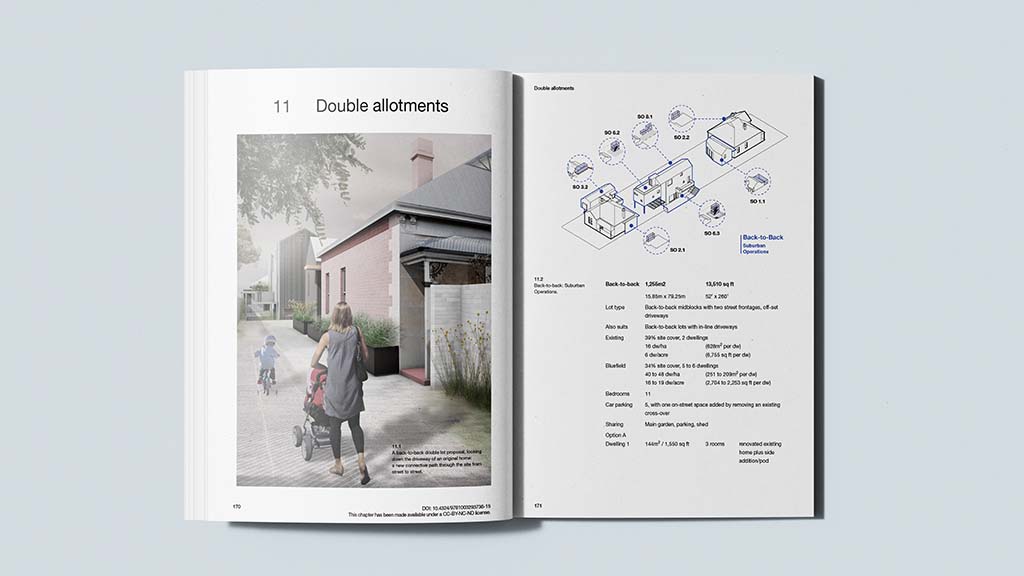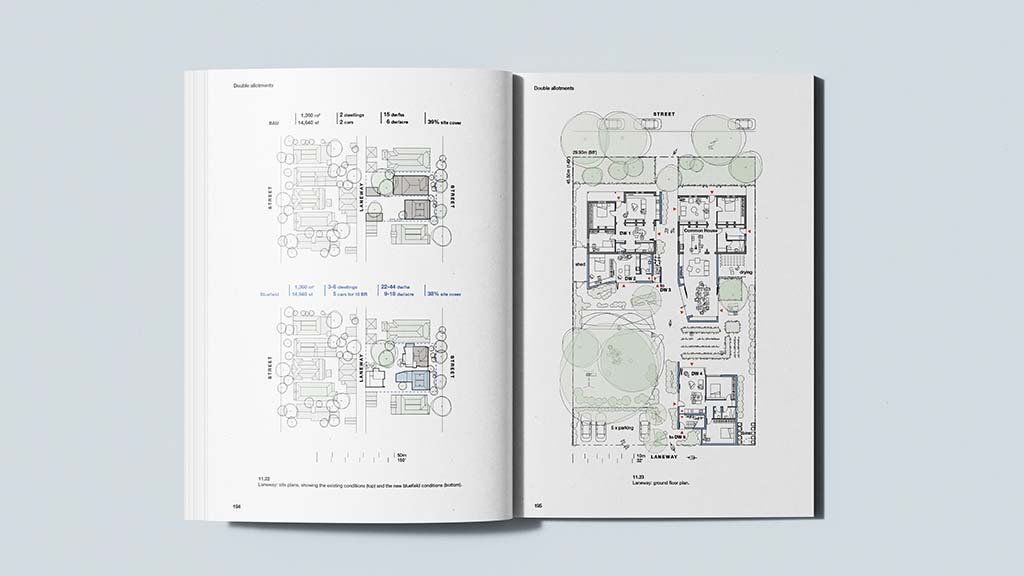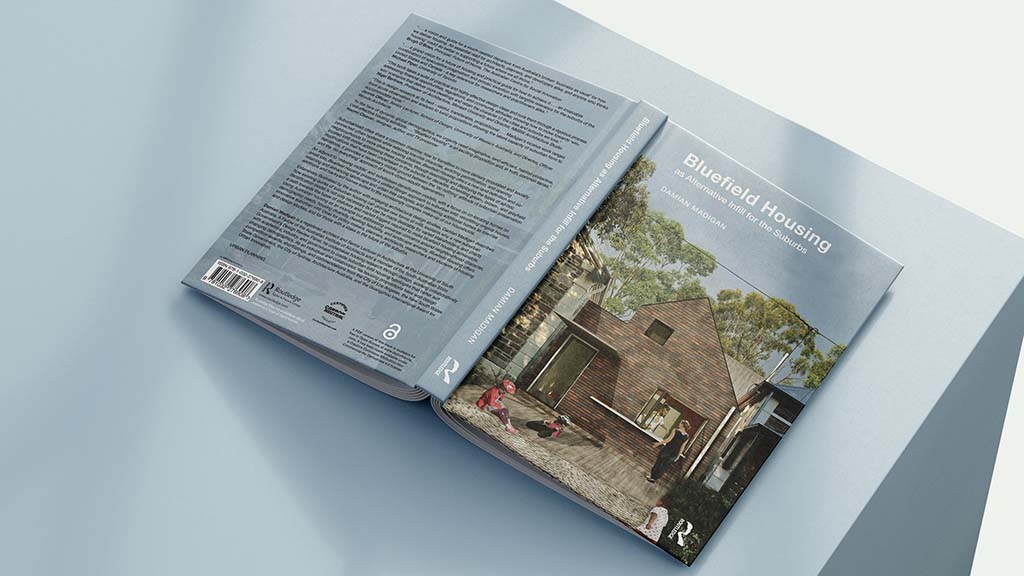Published by Routledge New York and London, Bluefield Housing as Alternative Infill for the Suburbs describes Damian Madigan’s co-location urban infill housing model first developed in his Alternative Infill PhD thesis and in subsequent design research projects since. It’s available in hardback, paperback, and as a free eBook download from Routledge.com.
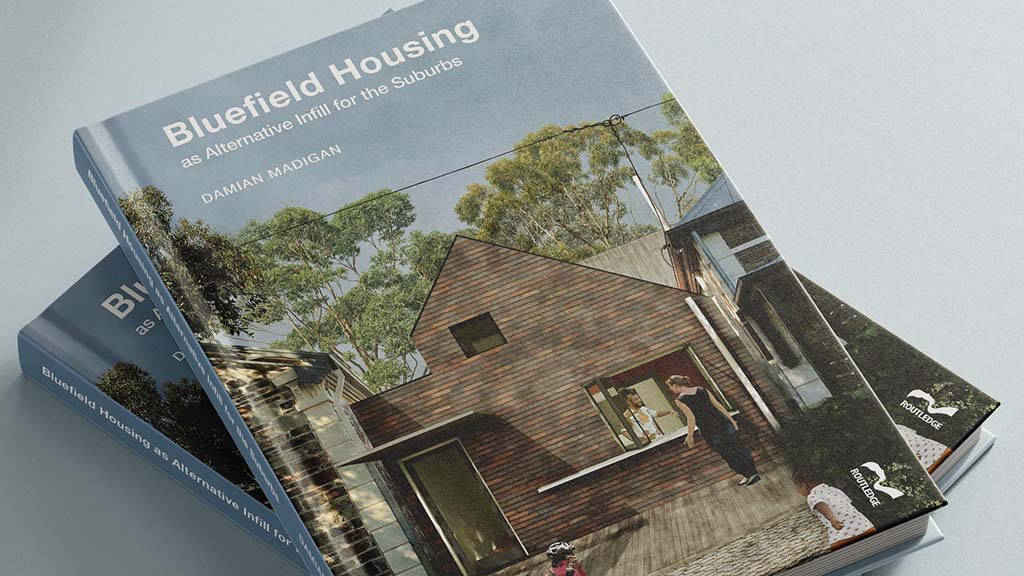
The Bluefield Housing book discusses barriers and opportunities to urban infill in older suburbs: how heritage and character can be reconsidered; shifting attitudes towards sharing space; the way alterations and additions building behaviours can be harnessed to create new housing; how landscape can be protected and enhanced; and the legal and financial triggers necessary to make change possible.
The book also outlines the the seven design principles underpinning the bluefield housing model.
Additionally, design exercises are provided for architecture and planning educators and scholars, to help uncover the underlying structure of older neighbourhoods and the types of small footprint housing that might be achieved there.
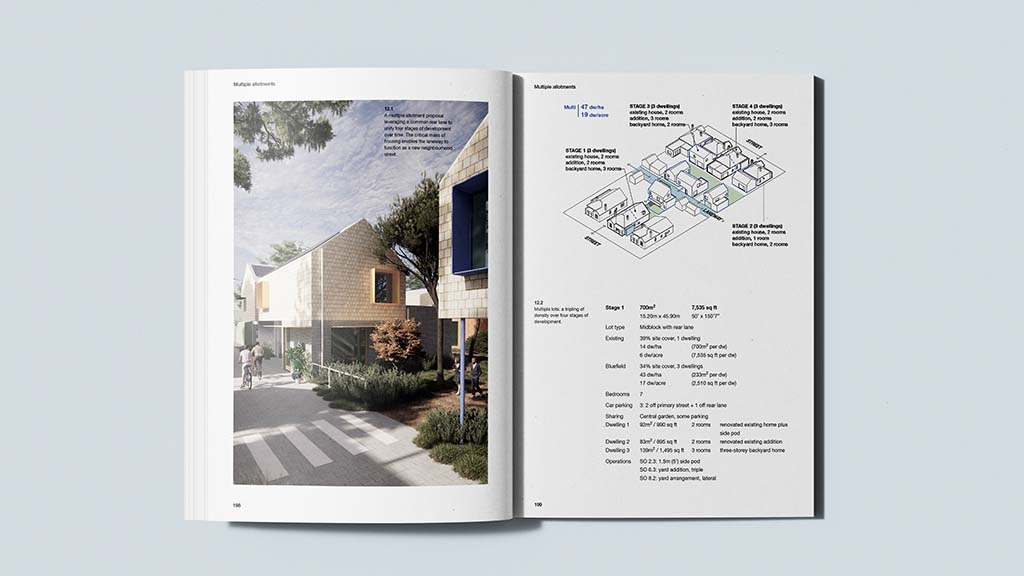
This book takes a suite of practical and highly effective design ideas and runs them through a rigorous process addressing financial opportunities, regulations, and community attitudes; showing how to move towards ‘win-win’ scenarios that deliver more dwellings and retain the character of the cities and suburbs we love.
– Nigel Bertram, Monash University and NMBW Architecture Studio
This book is both a grand vision for a future of housing and practical guide for how to achieve it.
– Michael Piper, University of Toronto
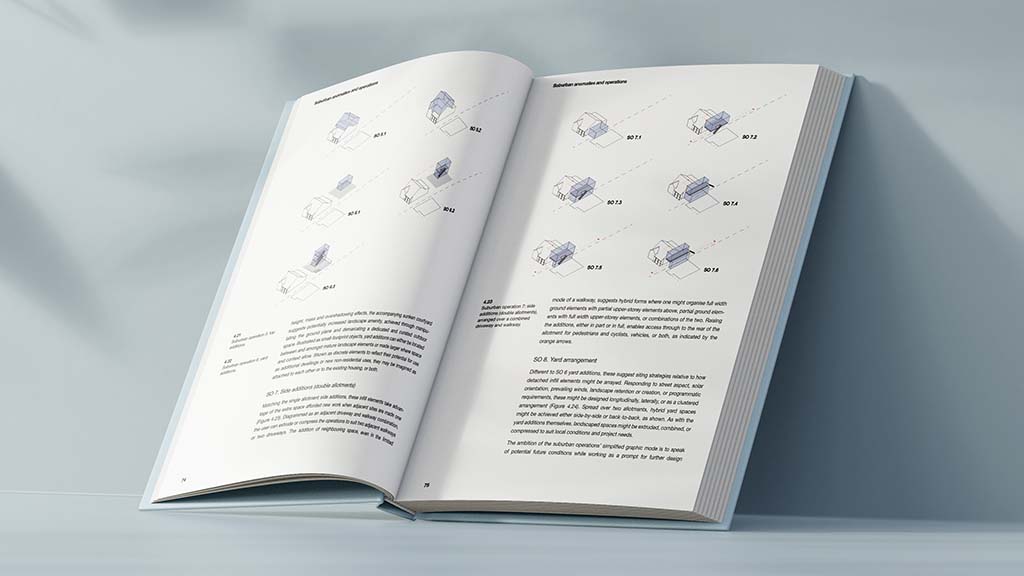
. . . a much needed departure from Australia’s broken ‘business as usual’ for how we deliver housing.
– Brugh O’Brien, The Australian Centre for Social Innovation
This is design research at its best – useful, transferable, propositional – advocating a compelling alternative to planning metrics. Madigan’s incisive work ranges from acute observation and analysis to lucid propositions showing the latent capacity of suburban form to accommodate more – more trees, open space, connections, diversity, people: more good stuff.
– Jennie Officer, University of Western Australia and Officer Woods Architects
In the face of dynamic global demographics we urgently need imaginative, land-efficient, habitat-protective, cost-effective housing solutions. Madigan’s concept of ‘Bluefield Housing’ is an exciting proposition and, in truth, common sense.
– Naomi Cleaver, UK designer, author, and TV presenter
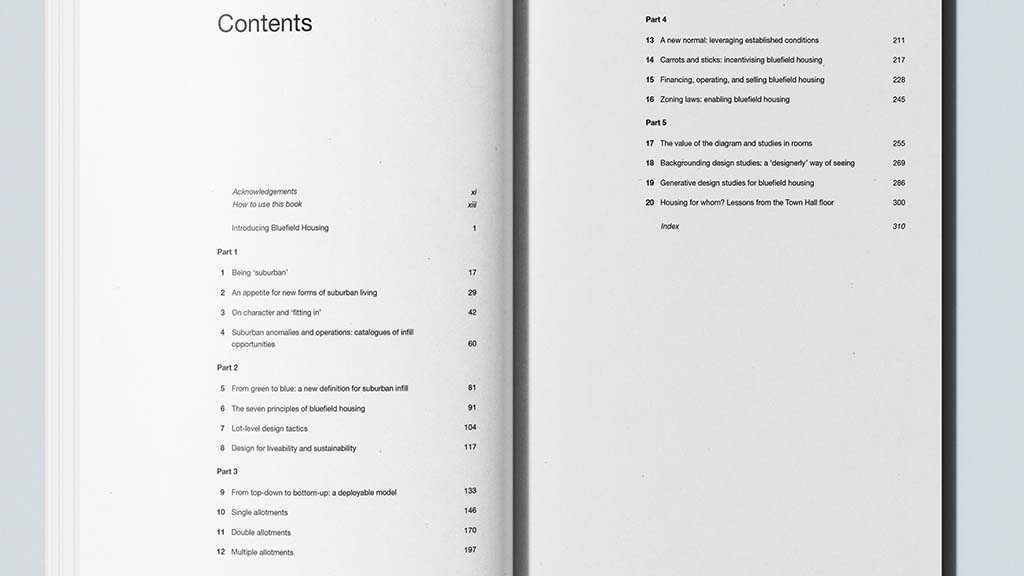
From the publisher:
Suburbanised cities share a common dilemma: how to transition to more densely populated and socially connected urban systems while retaining low-rise character, avoiding gentrification, and opening neighbourhoods to more diverse housing choices. Bluefield Housing offers a new land definition and co-located infill model addressing these concerns, through describing and deploying the types of ad-hoc modifications that have been undertaken in the suburbs for decades. Extending green-, brown-, and greyfield definitions, it provides a necessary middle ground between the ‘do nothing’ attitude of suburban preservation and the ‘do everything’ approach of knock-down-rebuild regeneration.
An adjunct to ‘missing middle’ and subdivision densification models, with a focus on co-locating homes on small lots, Bluefield Housing presents a unified design approach to suburban infill: retrofitting original houses, retaining and enhancing landscape and urban tree canopies, and delivering additional homes as low-rise additions and backyard homes suited to the increasingly complex make-up of our households.
Extensively illustrated by the author with engaging architectural design studies, Damian Madigan describes how existing quirks of suburban housing can prompt new forms of infill, explains why a new suburban densification model is not only necessary but can be made desirable for varied stakeholders, and charts a path towards the types of statutory and market triggers required to make bluefield housing achievable. Using Australian housing as an example but addressing universal concerns around neighbourhood character, demographic needs, housing diversity, dwelling flexibility, and landscape amenity, Bluefield Housing offers innovative suburban infill ideas for policy makers, planners, architects, researchers and students of housing and design studies, and for those with a stake in the future of the suburbs.
The Open Access version of the Bluefield Housing book, available at www.taylorfrancis.com, has been made available under a Creative Commons Attribution-Non Commercial-No Derivatives (CC-BY-NC-ND) 4.0 license.
